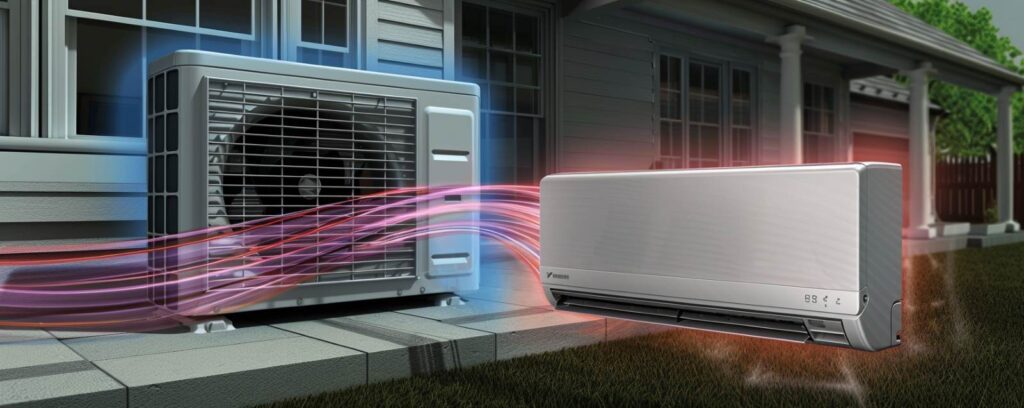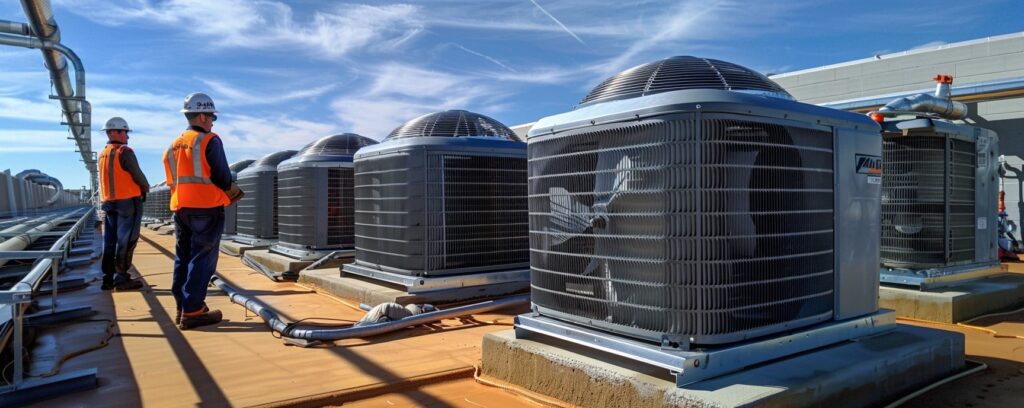The diversity of America’s landscape is evident in its vast array of climates. Some cities, however, consistently experience soaring temperatures that not only influence the daily lives of their residents but also shape the city’s culture, infrastructure, and economy. Let’s explore these scorching locales.
How We Picked Our List
When determining the “hottest” cities in America, it’s crucial to define the parameters of what “hottest” entails, as this term can be interpreted in multiple ways. Each interpretation offers its own perspective, affecting how cities are evaluated and compared:
- Daily Average Temperatures: Representing the mean temperature over a 24-hour period, this metric identifies cities with consistently high temperatures, even if they don’t reach extreme peaks.
- Average Number of Days Above 90 Degrees: Rather than focusing solely on average temperatures, this criterion highlights cities that regularly experience intense heat, as shown by days exceeding 90 degrees.
- Record Hottest Temperatures: This metric focuses on the all-time high temperatures a city has achieved. While a city might set a record, it could still have relatively moderate average temperatures.
- Heat Index: Going beyond mere temperature readings, the heat index factors in humidity, offering a fuller picture of perceived heat. Thus, a city could register a moderate temperature but feel substantially hotter due to elevated humidity levels.
- Duration of Heat Waves: The frequency and length of heatwaves, defined as extended periods of excessive heat, provide insights into the consistency of a city’s hot climate.
Our list of the hottest cities considers these diverse metrics to furnish a well-rounded view of what makes a city truly “hot.”
Furthermore, while “hotness” can be relative based on the specific metrics applied (e.g., average summer temperatures or days exceeding certain temperature thresholds), we also factored in population size. Although not all listed cities boast populations over 1 million, they either approach this figure or are integral parts of larger metropolitan areas that do.
The List of the Hottest Cities in America
While the U.S. boasts a wide range of climates, certain cities consistently record high temperatures. Here, we highlight some of the urban areas where the heat is not just a summer phenomenon but a defining characteristic.
Phoenix, situated in the Sonoran Desert, is often dubbed the hottest major city in the U.S. With numerous days surpassing the 100°F threshold and a high average annual temperature, this city is a testament to resilience in the face of scorching conditions. Visitor information for Phoenix .
Known for its glittering strip and bustling nightlife, Las Vegas is also infamous for its desert heat. The city frequently experiences temperatures that make staying indoors during peak hours a wise decision. Visitor information for Las Vegas .
A part of the greater Los Angeles area, Riverside’s inland location means it often sees hotter temperatures than its coastal neighbors. The city regularly grapples with intense heat, especially during summer months. Visitor information for Riverside.
Deep in the heart of Texas, Dallas is no stranger to hot and humid conditions. While it does experience a mix of weather due to its transitional climate, summers can be particularly unforgiving. Visitor information for Dallas.
Being in the Sunshine State, Jacksonville melds high temperatures with humidity. The city’s subtropical climate ensures warm temperatures year-round with especially hot and humid summers. Visitor information for Jacksonville .
While San Diego is often lauded for its near-perfect weather, it still has its share of hot days, particularly in the city’s inland areas. The coastal breezes offer some respite, but summers can still be warm. Visitor information for San Diego .
New Orleans combines heat with high humidity, given its location along the Mississippi River and near the Gulf of Mexico. This vibrant city is as known for its cultural festivals as it is for its sultry weather. Visitor information for New Orleans .
The capital of Georgia, Atlanta, has a humid subtropical climate. This means hot, humid summers and, occasionally, heatwaves that can push temperatures into the high 90s or even above 100°F. Visitor information for Atlanta .
Located in central Florida, Orlando experiences a humid subtropical climate with hot and wet summers. The city’s numerous theme parks see a surge of visitors, even on the hottest days. Visitor information for Orlando .
Charlotte, one of the major U.S. cities in the southeastern part, experiences hot summers with high humidity levels. The city’s growing urban heat island effect also contributes to rising temperatures during peak summer. Visitor information for Charlotte .
Each of these cities, with their unique climates and challenges, exemplifies adaptability. Their residents, businesses, and local governments have all found ways to thrive and adapt in the face of consistent high temperatures.
Impacts of Extreme Heat on Cities
High temperatures, while often associated with sunny days and outdoor fun, come with their set of challenges, especially for urban areas. The implications of extreme heat stretch across various domains:
Infrastructure
Heat can take a toll on city infrastructure. Roads can soften and become rutted, power grids can be strained leading to blackouts, and public transportation systems, especially rail services, can face disruptions due to track warping.
Energy Consumption
The demand for air-conditioning surges during hot spells, leading to increased energy consumption. Cities often grapple with balancing the energy demand, leading to higher electricity costs and potential outages.
Public Health
High temperatures, especially when sustained, pose significant health risks. From heat cramps to heat exhaustion and potentially fatal heat strokes, the health system often sees an uptick in heat-related illnesses during peak summer months. Additionally, high temperatures can exacerbate existing health conditions like cardiovascular diseases.
Adaptive Strategies
In response to the escalating temperatures, many cities are implementing adaptive strategies. These range from constructing “cool roofs” that reflect more sunlight, planting more trees for urban shade, establishing community cooling centers, and launching public awareness campaigns about the dangers of extreme heat.
By understanding and addressing the multifaceted challenges posed by high temperatures, cities can better equip themselves to protect their residents, infrastructure, and ecosystems.
Where to Find Reliable Weather Data
Weather data plays a vital role in shaping our understanding of climate patterns and trends. Reliable data forms the foundation upon which cities plan their infrastructural needs, residents make daily decisions, and businesses forecast demands. But where does one source trustworthy and timely meteorological insights?
Importance of Accurate Data
Accurate weather data helps in:
Forecasting: Allows for early warnings, which can save lives during extreme weather events.
City Planning: Informs decisions on infrastructure, transportation, and utilities.
Agriculture: Assists farmers in crop planning and management.
Tourism: Guides tourists on the best times to visit certain destinations.
In essence, the repercussions of inaccurate weather data can be vast and varied, underscoring the necessity of reliable sources.
Resources for Weather Data
For those keen on staying updated with meteorological trends or seeking detailed climate insights, the following resources come highly recommended:
National Oceanic and Atmospheric Administration (NOAA) : As a U.S. federal agency, NOAA provides a plethora of weather, water, and climate data. With satellites, radars, and an extensive network of weather stations, it’s one of the primary sources of meteorological information in the country.
Weather.com : Affiliated with The Weather Channel, this platform offers local and national forecasts, radar images, and detailed weather reports. Its user-friendly interface and mobile app make it a popular choice for everyday weather updates.
AccuWeather : Known for its accuracy and comprehensive coverage, AccuWeather offers local forecasts for virtually every location on Earth. Their MinuteCast feature even provides minute-by-minute precipitation forecasts for certain locales.
U.S. Climate Data : For those seeking long-term climate averages and patterns, this platform provides detailed information by state and city. It’s especially useful for professionals in fields like agriculture, construction, and city planning.
These resources, with their extensive data repositories and innovative forecasting technologies, equip users with the insights needed to make informed decisions, be it for personal, professional, or academic purposes.
Precautions to Take in Extreme Heat
Extreme heat conditions can pose significant risks to health and well-being. As many of the hottest cities in America regularly experience soaring temperatures, it’s crucial for residents and visitors alike to be informed about safety measures. Here’s a guide to staying safe during heatwaves:
Stay Hydrated
Water is your best ally in combating the adverse effects of high temperatures. Make sure to:
Drink plenty of water throughout the day, even if you don’t feel thirsty.
Avoid sugary or alcoholic drinks as they can lead to dehydration.
Use a reusable water bottle to ensure you always have water on hand.
Limit Exposure
Reduce your exposure to direct sunlight and extreme heat by:
Staying indoors during peak heat hours, typically between 10 a.m. and 4 p.m.
Using air conditioning or fans to cool down. If your home lacks these, consider visiting public spaces like libraries or shopping malls to stay cool.
Wearing lightweight, light-colored, and loose-fitting clothing.
Protect Yourself Outdoors
If you need to be outdoors:
Apply sunscreen with an SPF of at least 30 and reapply every two hours.
Take frequent breaks in shaded areas.
Be Aware of Heat-Related Illnesses
Recognizing the signs of heat-related illnesses can be life-saving. Be alert for symptoms like:
Heat cramps: Muscle pains or spasms usually in the abdomen, arms, or legs.
Heat exhaustion: Heavy sweating, weakness, clammy skin, fast and weak pulse.
Heat stroke: High body temperature (above 103°F), hot and dry skin, rapid and strong pulse.
If you or someone you know shows signs of a heat stroke, it’s a medical emergency. Call 911 immediately.
Relevance to the HVAC Industry
With increasing temperatures in many cities across America, the demand for efficient heating, ventilation, and air conditioning (HVAC) systems is on the rise. But how does this trend directly impact the HVAC industry?
Rising Demand for Air Conditioning
The most apparent impact is the surging demand for air conditioning. In cities where extreme heat is common, a functional AC unit isn’t a luxury—it’s a necessity. This leads to:
- An increase in sales and installations of new units.
Regular maintenance and service requirements for existing systems.
Technological Innovations
The HVAC industry is seeing rapid advancements in technology to cater to the increasing need for energy-efficient and high-performance systems. This includes:
Smart HVAC systems that can be controlled via smartphones or voice commands.
Energy-efficient models that consume less power, leading to cost savings and environmental benefits.
Professional Opportunities
As demand grows, there’s a parallel increase in the need for skilled professionals in the HVAC field. This opens doors for:
Jobs in HVAC system design, installation, maintenance, and repair.
Training and certification programs for those keen on entering or upskilling in the industry.
Challenges and Adaptations
With opportunity also come challenges. The HVAC industry needs to grapple with:
Keeping up with the rapidly changing technology and consumer demands.
Ensuring that the increased load on power grids due to HVAC systems doesn’t lead to outages or failures, especially during peak demand periods.
In conclusion, the rising temperatures in America’s hottest cities present a mix of opportunities and challenges for the HVAC industry. By staying informed and adaptive, professionals in the field can navigate these changes while ensuring residents stay cool and safe.
Resources for the HVAC Industry
As the demand for heating, ventilation, and air conditioning (HVAC) systems surges in response to increasing temperatures, it’s imperative for professionals in the industry to access resources that can aid in their efforts to adapt and innovate. Here are some crucial resources tailored for the HVAC industry:
Training and Certification
Staying updated with the latest in HVAC technology and best practices is essential:
North American Technician Excellence (NATE) : The largest non-profit certification organization for HVAC and refrigeration technicians, offering a range of certifications to showcase proficiency.
HVAC Excellence : Provides certification for technicians and educators, aiming to raise the standards of the industry.
Industry News and Trends
Keeping an ear to the ground regarding the latest trends and technologies can provide a competitive edge:
ACHR News : A leading news platform for the HVAC industry, covering topics from market trends to new product launches.
Contracting Business : Provides news, product reviews, and articles tailored for HVAC contractors.
Professional Organizations
Joining professional bodies can offer networking opportunities, industry insights, and advocacy:
Air Conditioning Contractors of America (ACCA) : Represents HVAC contractors and ensures the broader industry adopts ethical practices and maintains quality.
ASHRAE : An organization focused on building systems, energy efficiency, and sustainability within the HVAC&R industry.
Energy Efficiency Resource
As the demand for energy-efficient systems grows, this resource can guide the industry’s eco-friendly adaptations:
- Department of Energy: HVAC Technology : Provides resources, research, and insights related to HVAC advancements and energy efficiency.
By leveraging these resources, HVAC professionals can stay ahead of the curve, ensuring they meet the evolving needs of cities experiencing rising temperatures while also championing energy efficiency and sustainability.
Future Projections
As global temperatures continue to rise, it’s important to consider what the future might hold for America’s hottest cities. Climate models and projections give us insights into potential shifts in temperatures, precipitation patterns, and more, all of which can have profound impacts on these urban areas.
Potential for Even Hotter Temperatures
Many climate models suggest that cities already experiencing high temperatures may see even more days of extreme heat. This could mean:
Longer and more intense heat waves.
Fewer cooling periods or breaks between high-temperature spells.
Nights that don’t provide much relief from the day’s heat.
Impacts on Local Ecosystems
Increased heat can have a ripple effect on local ecosystems. For instance:
- Native plant species might struggle, while heat-tolerant invasive species could flourish.
- Changes in water availability could impact both plant and animal life.
Urban wildlife might face challenges accessing food, water, or shade.
Economic and Societal Impacts
Rising temperatures can also have economic repercussions:
Increased energy demands could lead to higher electricity costs.
Industries like agriculture and tourism might face challenges and need to adapt.
The need for infrastructure upgrades or modifications could place financial strains on city budgets.
Positive Adaptations
While the projections might seem daunting, they also offer opportunities for positive change:
Cities can invest in green infrastructure, like urban forests and green roofs, to provide cooling effects.
Research into heat-tolerant crops could support agriculture in these hotter cities.
Community awareness and preparedness programs can ensure residents are equipped to handle the rising temperatures.
For precise and up-to-date statistics, as well as a comprehensive ranking, you would want to consult the National Oceanic and Atmospheric Administration (NOAA) or the U.S. Climate Data Center.




